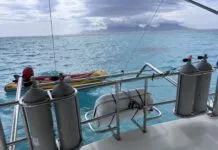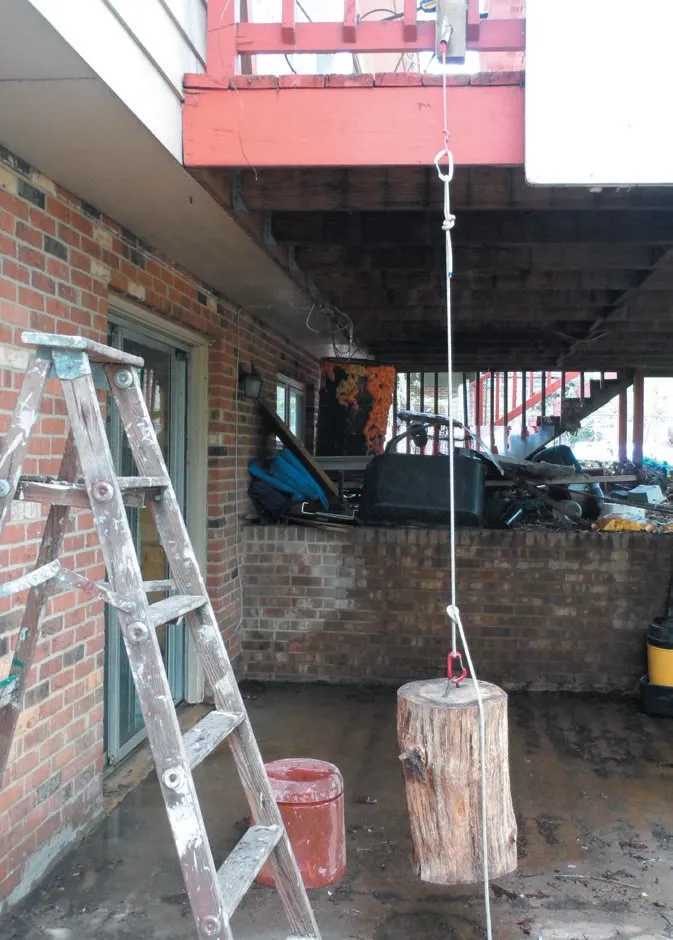Spring Lines for Storm Preparedness
A well-secured boat in the best-designed marina can't be expected to survive a direct hit from a hurricane. Major boat-insurance companies recommend hauling out and tying down your boat, but that isn't always an option, nor is it any guarantee.
Tips for Riding Out the Storm in Your Marina
Practical Sailor has covered storm preparation on several occasions. The two most extensive articles appeared in July 2008 Gear for Battening Down Ahead of Storms, and Tropical Storms Dos and Donts, from November 2011. We also have an online article How to Help Your Boat Survive a Major Storm. What follows are just a few tips relevant to securing your boat in a marina when you have exhausted all other safer alternatives.
Pencil-Thin Anchor Rode
Would you trust a pencil-thin, anchor chain that touts greater strength than the locker-full of high-quality, 3/8-inch, galvanized short-link chain that youve counted on for years? Would you even want a lighter chain? After all, the chains heft creates catenary, that all-essential dip in the anchor rode that improves your anchors holding ability.
Sewn Splices Two-Year Followup
The true test of marine gear is not whether it works when installed, but rather how it functions after years in the field. To that end, we have left samples of sewing materials and sewn test samples in the sun, wind, rain, and snow for two years, and have also sailed with sewn samples in service on our test boat.
The No-sew Webbing Strap with Link Buckle
Weve sewn our fair share of eyes in nylon webbing, but heres an easy no-sew alternative for creating a webbing strap with a buckle (shackle) that can be used for easily lashing down the dinghy, a battery, or even holding up your pants in a pinch. It is based on stuff a sailor has on hand-webbing, a chain link, and a shackle-and is as strong as professionally sewn ends, plus it can be untied after loading. It has tested at greater than 85-percent breaking strength and 100 percent of minimum rate strength, and it works on both nylon and ultra-high strength materials like Vectran webbing.
A Quest for Keel Integrity
Over the past few years, weve noticed a worldwide uptick in keel failures. The problem has yet to reach epidemic proportions, but we are hearing more and more troubling accounts of what happens when the ballast parts company with the hull, and a crew faces capsize, flooding, and-all too often-death.
Hitches to Grip Anchor Chain
When researching Changing Views on Chain Hooks (see PS, March 2016 online), we were surprised to discover that some chain hooks greatly reduced the breaking strength of a chain. Unless the hook itself broke, we assumed its effect on chain strength would be very minor.
Mechanical Terminal Pull Test
Swageless wire-rope terminals have long been a favorite piece of rigging kit among all kinds of sailors. These terminals are inspectable, reusable, and can be assembled with simple hand tools. But for all of their acknowledged advantages, data is scarce about their mechanical efficiency. How much, if any, do they weaken the wire rope they are attached to?
Swage Fitting Breaks Surprise PS Testers
During the first round of mechanical terminal testing, testers were surprised to see that wire failures were occurring at loads that were at least 10-percent lower than expected. The swaged-end fittings had been applied by a rotary swage machine, which is considered to be a very reliable way to form swaged terminals.
Poured-Socket Assembly Requires Special Care
The most common error with poured sockets is insufficient cleaning of the wire, and/or using the wrong solvent to clean it. Even dry, stainless wire, when new, can have a residue of lubricant left over from the extrusion process. If this lubricant is not removed, it can compromise the adhesion of the wire yarns to the filler material in the socket.

















































